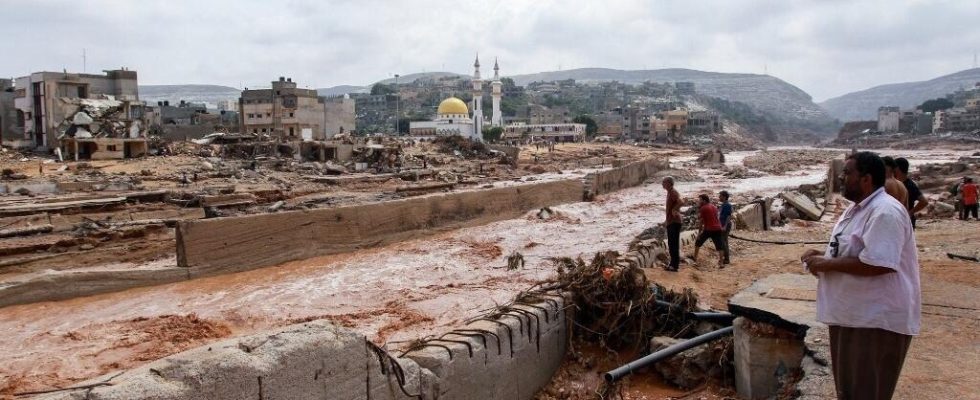In Libya, searches continue to try to find the thousands of people missing. But people want to start getting answers. The disaster was unprecedented, but the failure of two dams was not just the result of Storm Daniel. Local authorities and experts point the finger at the failings of a failed Libyan state.
2 mins
Storm Daniel got the better of the dams. But it was only a matter of time. The mayor of Derna revealed that the last maintenance of one of the two constructions dates back to 2002.
For Malak al-Taïeb, a researcher specializing in water issues in North Africa, the dilapidation of the constructions carried out 50 years ago by a Yugoslav company contributed to the human tragedy. “ The weakness of the dam structures and also the presence of cracks inside the constructions have weakened the strength of the dams over the years. I think this has contributed to increased flood threats. »
For the researcher, the passage of storm Daniel in Greece a few days earlier should have alerted the Libyan authorities. “ Measures could have been taken such as evacuation to safer areas located at higher altitudes. It wouldn’t have been perfect, but at least people would have been saved. »
These two dams were not the largest in the country. And experts warn that they are all in a more or less fragile state due to lack of maintenance.
Read alsoFloods in Libya: the international community at the bedside of Derna, who buries his dead
The climate cause
But if observers point to faulty warning systems and the collapse of two aging dams, the disaster also finds a climatic explanation. Because storm Daniel is a Mediterranean subtropical cyclone, also called a “Medicane” by experts. This term comes from the contraction of Mediterranean and “hurricane”, hurricane in English.
The power of this cyclone is explained by the very high average sea temperature this summer, 28°C. Near the Libyan coast, it exceeded normal by 3 to 4°C. This is a consequence of climate change. This enhances evaporation. Thus, the air present at the surface of the water heats up and becomes more and more humid. The gap then widens with very cold altitude temperatures, giving rise to a cyclone.
The swirling winds can reach speeds of 160 km/h and bring with them very heavy precipitation. In the Derna region, Libya’s national meteorological center measured up to 400 mm of precipitation in one day, a hundred times more than usual in September. Very dry soils were unable to absorb these extreme amounts of water.
Read alsoLibya: what the images say about the unfolding of the disaster in Derna
